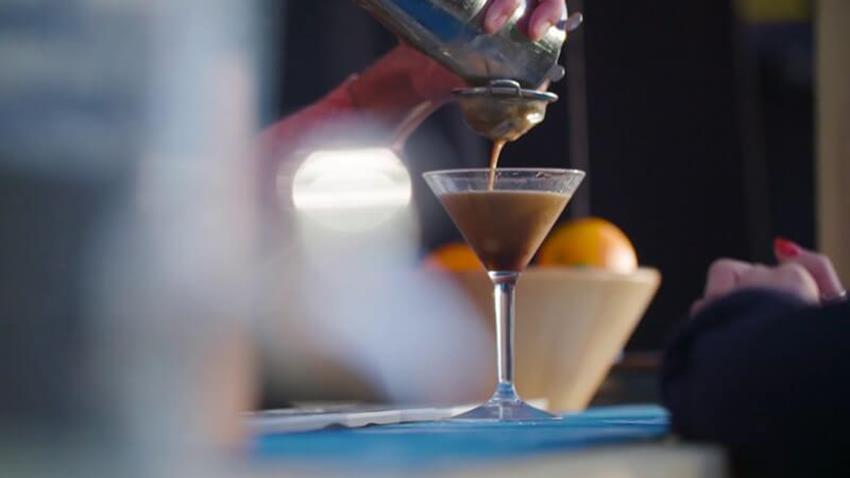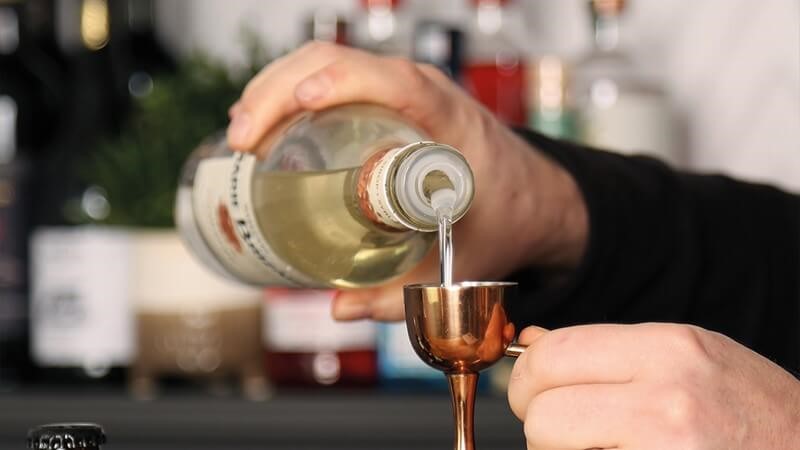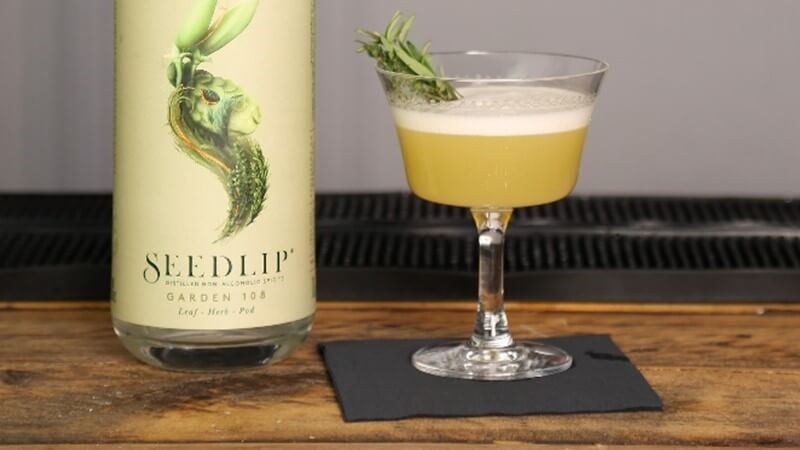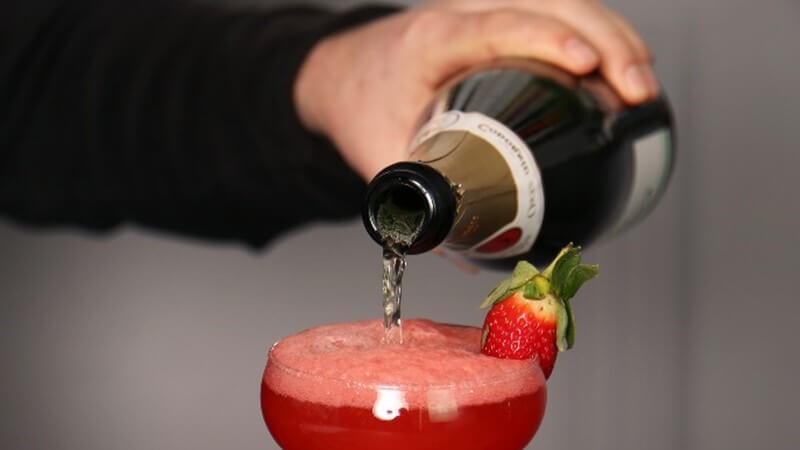
No longer sickly sweet drinks loaded with juice and sugar, today’s no and low alcohol serves are crafted with the same care and attention as their boozy counterparts. The amount of consumers abstaining and moderating their alcohol consumption is on the rise with Millennials drinking less than Baby Boomers and Generation X. Bartenders are, therefore, upping their game with a broad range of no and low alcohol serves that offer something for everyone and every occasion.
There are many types of low and no alcohol serves, each increasingly able to fill the gap left when alcohol is removed from the equation. These serves fulfil two important roles in your venue. Firstly, they reduce the ‘fear of missing out’ and allow customers to skip booze without the social pressure. Secondly, they enhance the ‘joy of missing out’ and give abstainers and moderators a great tasting and high margin drink that leaves them with a clear head in the morning.
How much alcohol is in a cocktail?
The alcohol content of a cocktail is measured in Alcohol by Volume, quite literally the amount of pure alcohol in the drink expressed as a percentage. It is most often written in its abbreviated form of ABV. You may occasionally see or hear the term ‘proof’ in relation to the alcohol content of drinks. Proof is primarily used in the United States and is the equivalent of two-times ABV. For example, a 40% ABV spirit is the equivalent of 80 proof.
Calculating the ABV of a cocktail, with just a single wine or spirit present is quite easy. Calculate the amount of pure alcohol present and divide by the total size of the drink, remembering to account for the water added when shaken or stirred. Take a screwdriver cocktail for example, which has 50ml of 40% ABV vodka and 150ml of orange juice; if stirred for around 30 seconds in glass you can assume around 20ml of water is added. 50ml multiplied by 0.4 (40%) equates to 20ml of pure alcohol. This 20ml divided by 220ml (the total volume of the drink) equals 0.09. The alcohol content of a Screwdriver cocktail is therefore approximately 9% ABV.
To calculate the ABV of a drink with various alcoholic ingredients you simply need to calculate each value individually, adding the pure alcohol figures together before diving by the total drink volume. Let’s use a classic gin martini for example, which has 62.5ml of 40% ABV gin and 12.5ml of 18% ABV Vermouth. Calculating the gin first, 62.5ml multiplied by 0.4 (40%) equals 25ml of pure alcohol. For the vermouth, 30 multiplied by 0.18 (18%) equals 2.25. The pure alcohol content of a classic Martini cocktail is therefore 27.25ml, equating to an ABV of approximately 28.7% when around 20ml of water is added through stirring.

Online Cocktail ABV Calculator
While you can quickly and easily estimate the ABV of a cocktail using the method outlined above, for more complex calculations, you might want to use our cocktail ABV calculator. This online tool will give you a good estimate of how strong a cocktail is. Dilution is unpredictable however, so this cocktail calculator should only be used for an approximation.
Calculate the ABV of a cocktail online
The top ten cocktails in the UK by alcohol content
Based on typical recipes, the Classic Martini is the strongest cocktail of the the top 10 sellers in the UK on-trade;
| Rank | Cocktail Name | ABV |
| 1 | Classic Martini (5:1 ratio) | 28.4% |
| 2 | Long Island Iced Tea | 17.2% |
| 3 | Espresso Martini | 15.6% |
| 4 | Pornstar Martini | 13.6% |
| 5 | Strawberry Daiquiri | 12.3% |
| 6 | Woo Woo | 12.3% |
| 7 | Sex on the Beach | 12.2% |
| 8 | Tom Collins | 11.1% |
| 9 | Mojito | 11.0% |
| 10 | Pina Colada | 9.8% |
What is a no or low-alcohol cocktail?
With so much variance in ABV across cocktails, where should the dividing line be when discussing low-alcohol cocktails? Cocktails naturally have a high ABV, especially when compared to beer. For example, a pint of 5% ABV lager would be the equivalent of a 200ml cocktail serve of 14.2% ABV! There are no rigid definitions to work from, but you can use the following comments as a general guide;
Lower alcohol cocktail (8-12% ABV)
A cocktail that uses less alcohol than typical classic cocktails, or a cocktail that uses lower alcohol products such as sherry and vermouth rather than 35-40% ABV spirits. Examples include cobblers, spritz and coolers such as the Aperol Spritz (9.7%) and Sherry Cobbler (11%).
Low alcohol cocktail (3-8%)
Truly low alcohol cocktails will have a significant twist that drastically reduces the ABV. Most cocktails that clock in at between 3 and 8% ABV will either reduce a 50ml measure of spirit to 25ml or swap a 40% spirit for an 18% sherry or vermouth. Examples include ‘shim’ drinks and cocktails such as the ‘Leaner-Colada’ (7.8%) which halves the amount of rum and calories in a typical Piña Colada.
Ultra-Low alcohol cocktails (0.05-3%)
This category of low alcohol cocktail will either include alcohol alternative products such as Ceders (0.5%) or only include a small amount of alcohol through the use of bitters or a small amount of spirit. Ultra-Low cocktails may also contain Kombucha (0.5%) or any combination of the above. Examples include champagne and sparkling wine cocktails where the fizz is provided by Kombucha or spritzers with de-alcoholised wine.
Alcohol free cocktails (0-0.05%)
Alcohol free cocktails will use fully alcohol free alternatives such as Caleño or include only naturally alcohol free ingredients. Mocktails fall into this category, but the usage of this term as a catch all for alcohol free cocktails has declined. Bartenders are now looking to step away from the sugary connotations of mocktails and you’re much more likely to see this grouping of serves listed on menus as alcohol free, virgin or zero-proof.

What are the types of no and low-alcohol cocktail?
Regardless of ABV, most no and low alcohol cocktails are one of these eight popular cocktail styles:
1. Spritz
Type: Lower alcohol cocktail
Uber-popular spritz serves have been the story of successive summers. Although dominated by the Aperol Spritz, there is much more that can be done with this simple format. A great aperitif, the format for spritz recipes follows a simple structure of three parts sparkling wine, two parts liqueur and one part soda.
2. Cobbler
Type: Lower alcohol cocktail
A style of cocktail with a long history in the trade. Cobblers are best defined as fortified wine-based long drinks that use fresh fruit. Most common examples use sherry or vermouth, combined with fresh orange, pineapple or berries and plenty of crushed ice. Refreshing and fruity, these drinks are light and perfect for summertime sipping.
3. Shim
Type: Low or Lower alcohol cocktail (Depending on recipe)
The term ‘shim’ is a very modern invention, first coined by US author Dinah Sanders. The term is broadly used to describe cocktails with very little, or no full-strength spirits present. Sherry and fortified wines are often used as a substitute, replacing vodka, gin and whisky to create a more food-friendly serve.
4. Spritzers
Type: Ultra-Low, Low or Lower alcohol cocktail (Depending on wine ABV)
A popular lighter serve style that sees wine lengthened with soda water or lemonade. The alcohol content of a spritzer depends entirely on the ABV of the base wine and the ratio of wine to soda. Using a dealcoholised wine will result in a serve with less than 0.5% ABV, while using 125ml of 13% ABV white wine with a 50ml splash of soda will result in an ABV of 9.3%.

5. Coolers
Type: Ultra-Low, Low or Lower alcohol cocktail (Depending on recipe)
Coolers are the spirit equivalent of a spritzer, short spirit serves lengthened with soda or lemonade. These serves are generally made to be drunk over summer and, as such, often come served in a pitcher packed with fruits. The ABV of a cooler once again depends on the base ingredient which can be easily swapped for a non-alcoholic alternative.
6. Mocktails
Type: Alcohol free cocktail
Made to imitate the style of full-strength cocktails, mocktails are created without any alcoholic ingredients. Typically a mix of soft drinks, with the occasional addition of grenadine or other syrups, mocktails have developed a reputation for being sugary and artificial. That is not to say that they aren’t popular, mocktails are regularly found on menus and some have become well-known in their own right, think Shirley Temple.
7. Virgin Cocktails
Type: Alcohol free cocktail
Virgin cocktails differ from mocktails as they seek to imitate specific cocktails rather than the general style. Most commonly, virgin cocktails are classic cocktails with the alcohol removed or replaced. As with the Virgin Mary or Virgin Colada cocktails, the term is often used is a pre-fix to signify that the drink is served without the expected alcohol.
8. Zero-proof Cocktails
Type: Alcohol free cocktail
This final style of alcohol free cocktail seeks to elevate the category with a new generation of alcohol free cocktails that seek to replicate the craftsmanship and experimentation of full-strength cocktails. Zero-proof cocktails will use alcohol free spirits and liqueurs, shrubs or spices to create a drink with complex and delicate flavours. Zero-proof cocktails look to redress the balance in alcohol free cocktails away from sugar and towards more nuanced and ‘grown-up’ flavours.

